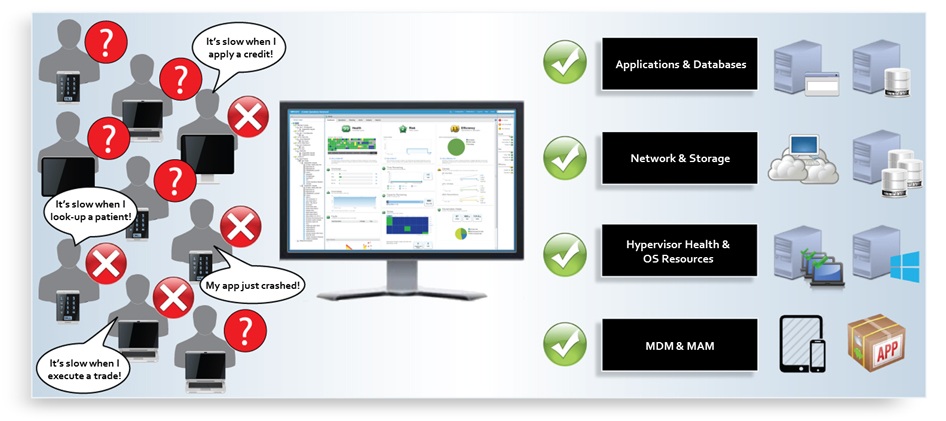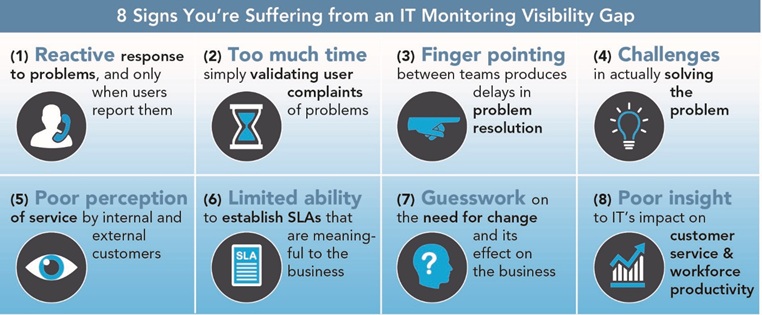
When you look at key trends driving the IT market, it's clear that the end user is at the center of converged "next generation" computing services that integrate cloud, mobility, and virtualization. The average workforce user relies on at least 3 devices per day – their mobile phone while they commute to the office, their tablet as they wait in a conference room for a meeting to occur, and their desktop or laptop once they get back to the office.
And the workforce relies on a whole set of applications which may or may not be under IT's control – cloud-delivered apps like Office 365 or Salesforce.com, apps run in data centers owned by outsourcers, not to mention "Shadow IT" apps the user simply decides to download, bypassing the enterprise app store.
The opportunity is clear. IT must manage all of these technologies in a seamless way to ensure they deliver excellent service. To succeed, IT requires visibility into the end user experience as the workforce moves among these various applications and devices throughout their day.
The Challenge – The IT Monitoring Visibility Gap
If the opportunity is clear, so is the challenge to IT. Why is this a challenge? Much of the problem has to do with the siloed nature of most IT monitoring products. Most monitoring and management technology focuses on monitoring the performance and availability of the application components in the infrastructure. Application Performance Management and Systems Management tools focus on web servers, app servers, databases, and hosts. Network and Storage Management tools focus on routers, switches, gateways, and storage infrastructure. Virtual monitoring tools focus on the hypervisor and OS resources. And Mobile Device Management (MDM) and Mobile App Management (MAM) are focused on metrics and analytics having to do with mobile devices and apps, respectively.

The problem with this siloed approach to IT management is that it lacks the perspective of what the end-users, the workforce, are actually experiencing as they use applications to conduct business. These separate monitoring tools can all show "green" to the IT Ops team, indicating satisfactory component performance and availability, when in reality the workforce is still complaining because they are experiencing slow performance on their devices when executing critical business activities, like applying a credit, looking up a patient record, executing a trade, or using a mobile app in the field.
The reason the workforce is still complaining despite the fact that your data center management tools show everything green, is that you can't measure end user experience from the vantage point of the data center "looking out". You can only measure it from the end user's perspective "looking in". That's the primary reason for the "IT Monitoring Visibility Gap" – the gap between what your tools are telling you and what your users are experiencing.
Be Thankful for Those Complaining End Users
Despite the billion dollar a year market for system management tools, analysts like Forrester estimate that 70-80% of problems impacting the end users are not detected by IT. (Forrester IT is a Business Risk). So if you're in IT, you should be thankful if your users complain to you. At least you know you have a problem so you can resolve it. But what about those users who suffer in silence and don't complain to you? That's when the IT Monitoring Visibility Gap becomes really painful.
8 Signs You're Suffering from an IT Monitoring Visibility Gap
Without accurate, real-time information about how end users are actually experiencing and interacting with their applications, devices, and network, you are subject to suffering from an IT Monitoring Visibility Gap.



